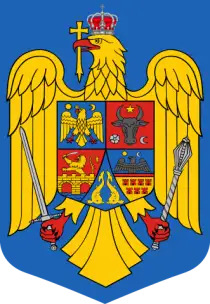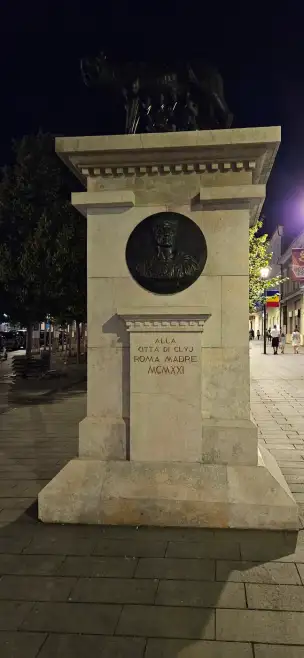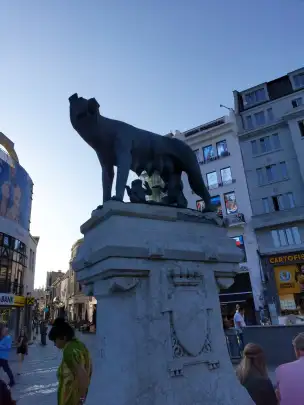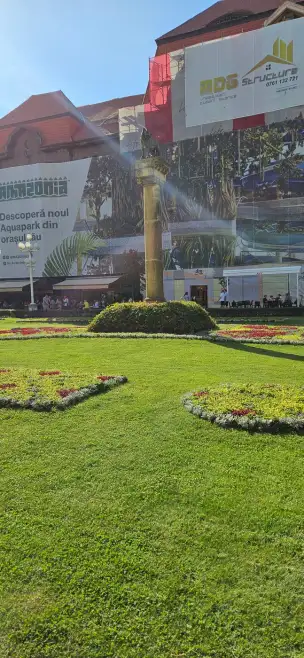Romania is a fascinating country with a rich history, diverse landscapes, and interesting tourist attractions.
Romania is famous for scenic driving routes such as the Transfăgărășan and Transalpina. These roads offer impressive views of mountains and valleys.
When traveling in Romania, it is worth trying traditional dishes like mămăligă (cornmeal porridge), sarmale (cabbage rolls), and mici (grilled meat rolls).
Romania has many protected areas, including Retezat National Park and the Danube Iron Gates National Park, where visitors can admire unique nature.
Since the 1990s, Romania was for us something like a divine scourge — a vast, gloomy land that had to be crossed on the way to Bulgaria, Greece, and Turkey. It was a place where the old E7 road lost its asphalt, and buses had to ford streams and small rivers due to missing bridges.
Back then, no one would have forced me to leave the main road even for a moment to see the historic centers of Timișoara, Sibiu, or Bucharest.
All anyone thought about was how to get out of Romania as quickly as possible.
Since then, Romania has changed dramatically. In terms of GDP growth, it has far outpaced its neighbors, which translated into the development of transport infrastructure. Today, traveling across this vast country is fast and comfortable, encouraging tourists to venture off the main roads more often to discover less obvious attractions.
But what is very glaring and bothersome in Romania?
The overhead power lines. I don’t know if it’s a matter of taste, technology, or law, but Romanian towns and villages, especially in the Wallachian part of the country, are drowned in dirty cables hanging from poles and buildings. This greatly spoils the landscape and architecture.
This problem affects Transylvania to a lesser extent, and there are also cities like Cluj-Napoca where it is practically non-existent.
Who were the Dacians?
Do you know the car brand Dacia? Now you’ll learn where that name comes from.
The Dacians were an Indo-European people who inhabited the territories of present-day Romania, Moldova, eastern Hungary, northern Bulgaria, and western Ukraine. They were closely related to the Thracians but, unlike them, they created a strong and well-organized state.
The Dacian language belonged to the Thracian-Dacian group of languages, which were part of the Indo-European family. However, no long texts have survived in this language — we know only about 300 words and proper names (such as those of rivers, towns, and plants).
Examples of Dacian words preserved in Romanian include:
- brad (fir tree)
- mal (riverbank)
- barză (stork)
- bucur (to rejoice), from which the name Bucharest (București) is derived.
The Dacians were excellent warriors and repeatedly faced the Romans in battle. Their distinctive weapon was the falx dacia — a curved sword capable of cutting through Roman armor and shields.
Why do Romanians speak a Romance language?
The Romanian language is a Romance language because it developed from the Vulgar Latin introduced by the Romans after they conquered Dacia (modern-day Romania) in 106 AD under Emperor Trajan. The process of Romanization was possible thanks to several factors:
- Mass Roman colonization – After the conquest, the Romans brought settlers from different parts of the empire, mainly from the western provinces, who spoke Latin.
- Destruction of the Dacian elite – After the Dacian Wars (101–102 and 105–106 AD), the Romans killed or expelled most of the Dacian aristocracy and warriors. According to ancient sources, around 500,000 Dacians were either killed or sold into slavery.
- Assimilation of women and children – After the extermination of Dacian men, the civilian population, especially women and children, was absorbed into Roman society. This fostered the adoption of the Latin language.
- Presence of Roman legions and administration – The Romans controlled Dacia for nearly 170 years, and Latin was the official, administrative, and military language.
- Trade and cultural contacts – Even after the Roman withdrawal from Dacia in 271 AD, Romanization continued because the local population maintained ties with neighboring Romanized provinces, especially those along the Danube.
This combination of military conquest, population changes, and ongoing cultural connections laid the foundation for Romanian to evolve as a Romance language in Eastern Europe.
What is “Romania”?
The first documented use of the word “Rumânia” referring to the lands inhabited by Romanians dates back to the 18th century, although the name became commonly used only in the 19th century.
The name Romania (România in Romanian) derives from the Latin word Romanus, meaning “Roman.” It directly refers to the Romance origin of the Romanian language and the Roman heritage of the people living in these lands.
In 17th-century Romanian chronicles and documents, the term rumân was used both as a synonym for “peasant” and, importantly, in an ethnic sense — to describe a Romanian-speaking person. In 1761, the Croatian-Italian scholar Giuseppe Boscovich mentioned Romania as a land inhabited by Romance peoples.
The word România is closely connected to the historical awareness of the Romanization of these territories, and Romanians often regarded themselves as descendants of the Romans (romani). However, in the Middle Ages, this name was not used as the official name of a country — Wallachia, Moldavia, and Transylvania functioned as separate political entities.
It was only in the 19th century, amid national ideas and aspirations for unification, that the name Romania was adopted for the new state.









